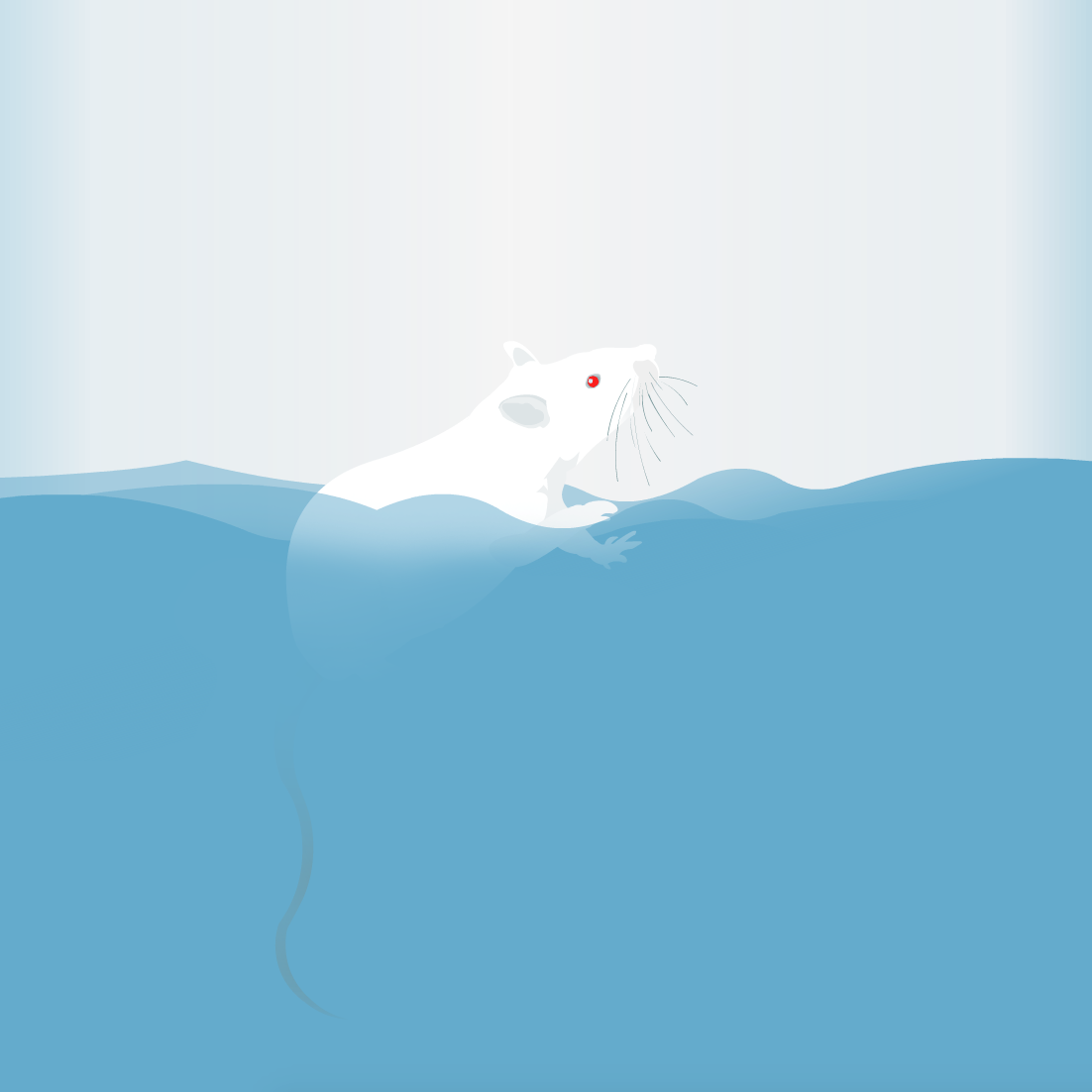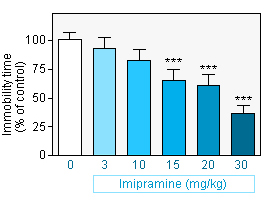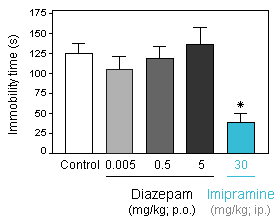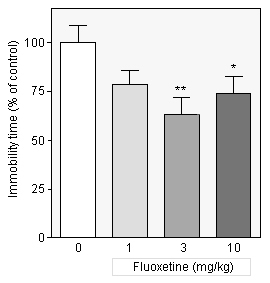Forced Swimming test in mice and rats
-

-
Presentation
- Animals placed in a container filled with water show periods of increased swimming activity and periods of relative immobility. Clinically active anti-depressants have been found to delay the onset of the first phase of immobility and to reduce the total time of relative immobility. The list of active compounds includes monoamino-oxidase-A (MAO-A) inhibitors such as moclobemide, brofaromine, noradrenaline (NA) uptake inhibitors such as imipramine and amytryptilin, MAO-B inhibitors such as selegiline and tranylcypromine, serotonin uptake inhibitors (SSRI) such as fluoxetine and paroxetine and combined NA / SSRI such as venlafaxine. Benzodiazepines and other types of psychoactive compounds have been found to be inactive in this test.
-
Compound testing
Compound testing addresses the effect of acute treatment on the immobility time of mice. Investigation of the effect of subchronic treatment is also possible.
-
Endpoints

Immobility time (s)
-
Antidepressant effect of Imipramine given ip. to Swiss mice 30 min before the test. -
* means p < 0.05 versus Control group.
Diazepam given p.o., 60 min before the test. -
Porsolt RD, Bertin A, Jaffre M. Behavioral despair in rats and mice: strain differences and the effect of imipramine. Eur J Pharmacol. 1978, 51:291-294.
Borsini F and Meli A. Is the forced swimming test a suitable model for revealing an-tidepressant activity ? Psychopharmacol. 1988, 94:147-160.
-
-
Antidepressant drugs, such as Imipramine and Fluoxetine, actively perform escape-directed behaviors and thus significantly reduce immobility time.
You could also be interested in
-
Marble burying
This test has some predictive value for anti-depressant and/or anxiolytic drugs.
-
Neurite outgrowth
Effect of reference compounds on neurite outgrowth in cortical neurons.

 Imipramine
Imipramine

